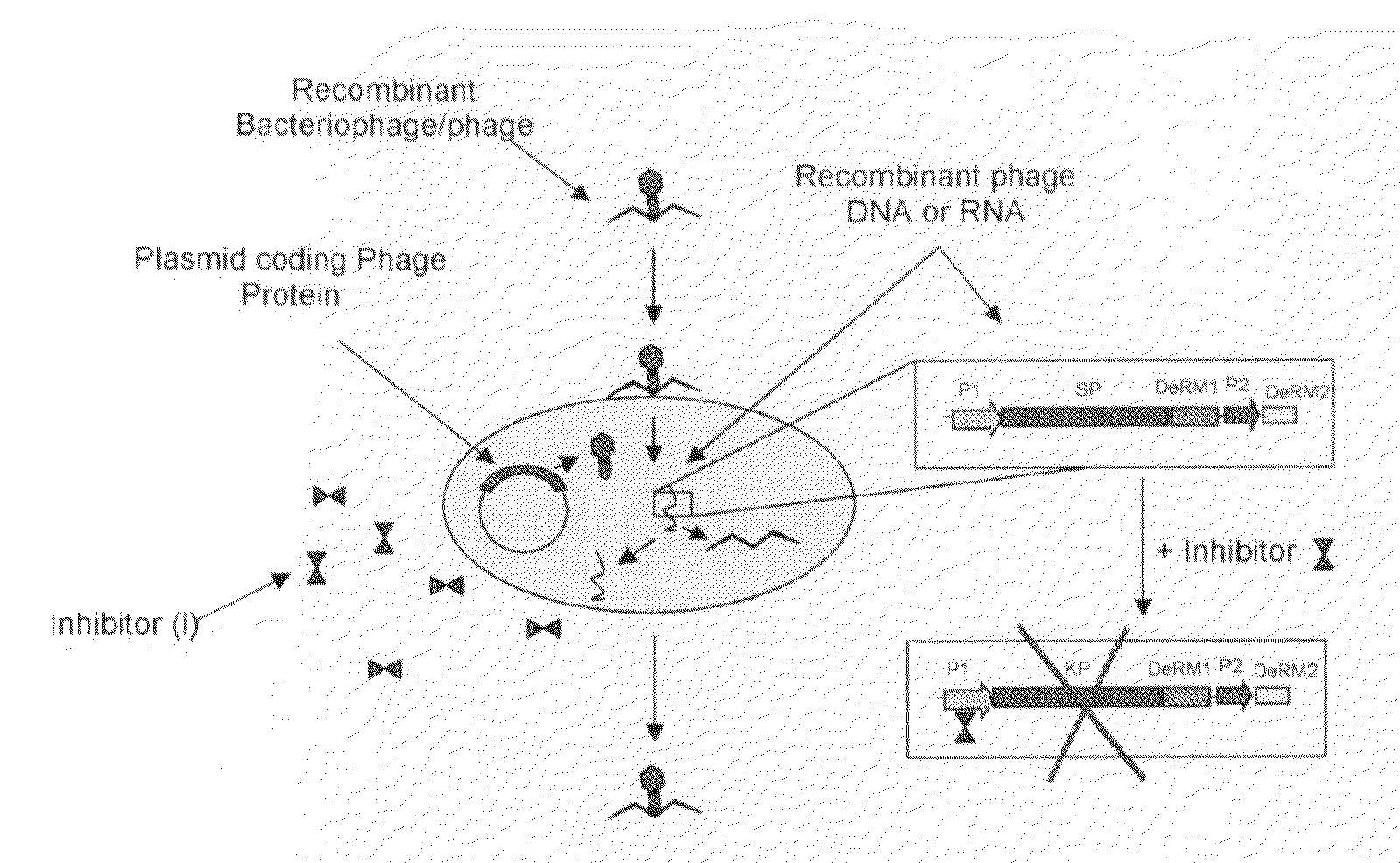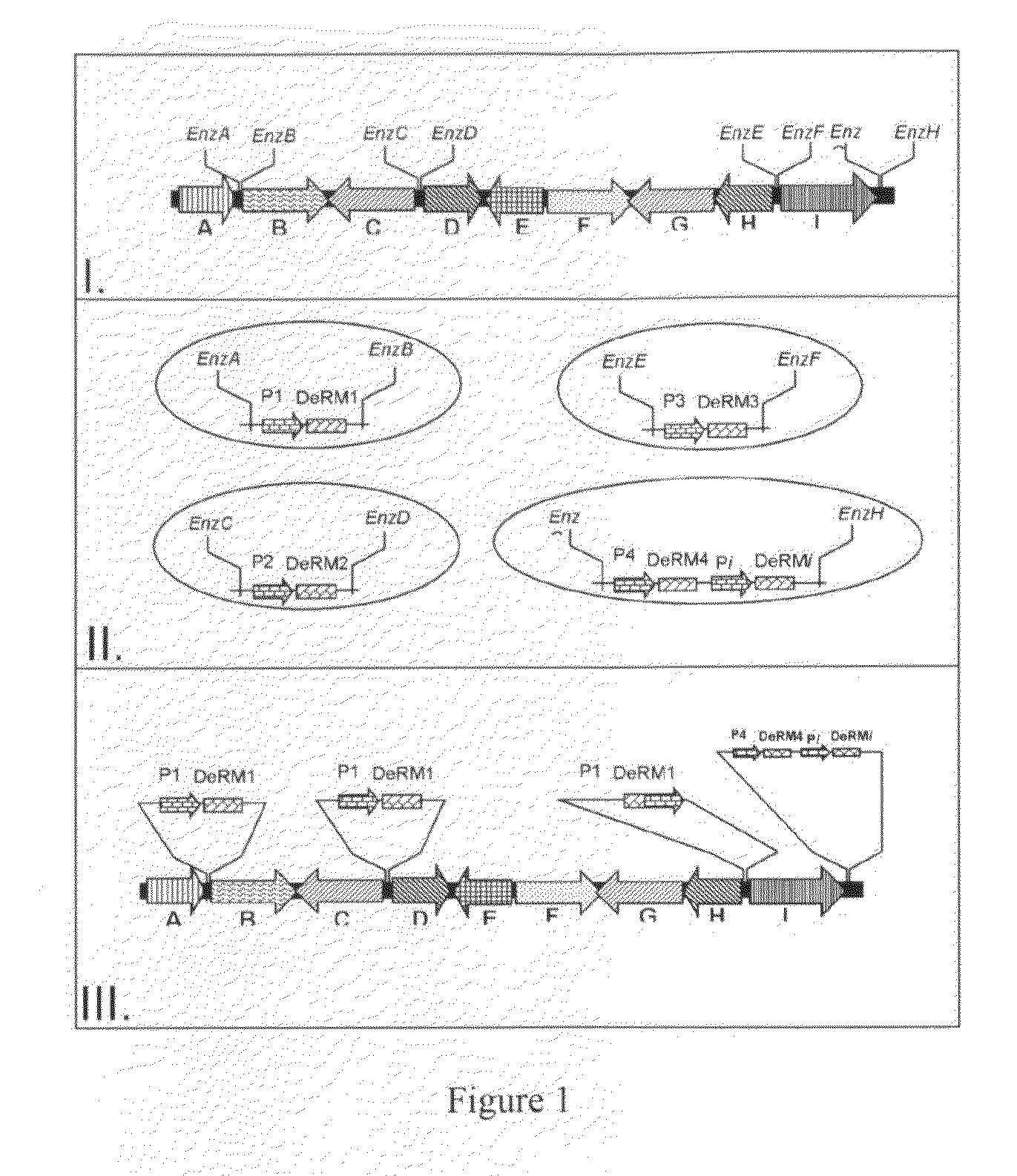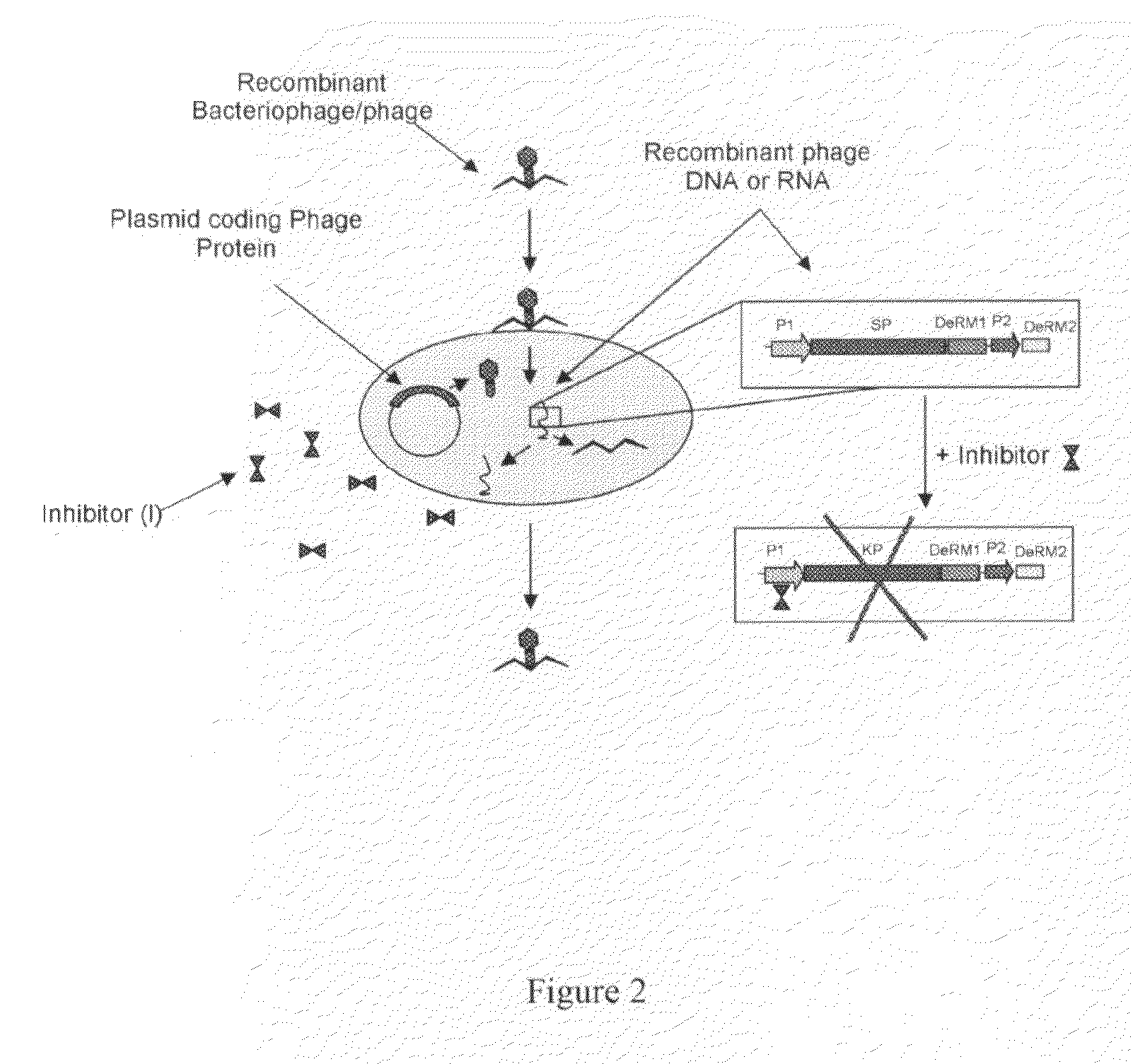Microorganism Detection Method and Apparatus
a microorganism and detection method technology, applied in the field of selective organism detection, can solve the problems of reduced milk yield, decreased milk quality, milk yield and quality, etc., and achieve the effect of high specificity
- Summary
- Abstract
- Description
- Claims
- Application Information
AI Technical Summary
Benefits of technology
Problems solved by technology
Method used
Image
Examples
example 1
[0053]This Example describes the construction of a recombinant bacteriophage, in accordance with an embodiment of the present invention. The construction of a recombinant bacteriophage comprises the modification of the bacteriophage's genome. The bacteriophage's genome (e.g. Mycobacterium species bacteriophages: L5, D29, TM4, Bxb1, DS6A, Barnyard, Bxz1, Bxz2, Che8, Che9c, Che9d, Cjw1, Corndog, Omega, Che12, Bethlehem, and U2; Staphylococcus aureus bacteriophages: P1, P14, CDC 47, 42E, CDC 52, CDC 52A, CDC 79, CDC 53, and UC 18; Enterococcus faecalis bacteriophages: VD13, 42, phiEF24C, PlyV12, and phiFC1; Clostridium difficile bacteriophages: phiC2, phiCD119, PhiC5, PhiC6, PhiC8, C2, and CD630) is modified such that one or more bacteriophage's gene(s) is / are controlled by conditional promoter(s) (e.g. heat shock promoters, where 42° C. is the restrictive temperature and the permissive temperature can be, for example, room temperature to 37° C. Conditional promoters may also be associ...
example 2
[0056]This Example describes the production of recombinant bacteriophages, in accordance with an embodiment of the present invention. Recombinant host bacteria are used to produce the bacteriophage. The recombinant host bacteria contain exogenous DNA coding for the wild type gene(s) with respect to the constructed recombinant bacteriophages described in Example 1, although without any of the described modifications and / or fusions. The recombinant bacteriophage is allowed to infect this recombinant host bacterium under conditions that neither allows the expression of the modified gene(s) in the constructed recombinant bacteriophage's genome described supra, nor the additional Detectable Reporter Molecules(s). Functional bacteriophages are then produced using the unmodified wild type proteins present in the recombinant phage genome and those in the recombinant host bacteria, without producing exogenous reporter molecule(s). This production of recombinant bacteriophages is further illu...
example 3
[0061]This Example describes how the recombinant bacteriophages produced in Example 2 are used to detect the presence of target bacteria in a sample. The detection of target bacteria in a sample occurs through the expression of Detection Reporter Molecules, as described in Example 2.
[0062]The recombinant bacteriophages produced in Example 2 can be used to infect target bacterial cells that are present within a sample. The infected target bacterial cells (i.e. lysogens) are kept in a condition such that the exogenous Detection Reporter Molecules (described in Example 2) is expressed (e.g. presence of an inducer or absence of a repressor), thereby providing a means for identifying the target bacteria by detecting the expressed Detection Reporter Molecules.
[0063]Turning to FIG. 3, the bacteriophage produced in Example 2 (which may be present in a test kit) is used to test whether a sample (e.g. blood, urine, sputum, etc) contains any target bacterium (e.g. Mycobacterium species, Staphy...
PUM
| Property | Measurement | Unit |
|---|---|---|
| Electrical resistance | aaaaa | aaaaa |
| Affinity | aaaaa | aaaaa |
Abstract
Description
Claims
Application Information
 Login to View More
Login to View More - R&D
- Intellectual Property
- Life Sciences
- Materials
- Tech Scout
- Unparalleled Data Quality
- Higher Quality Content
- 60% Fewer Hallucinations
Browse by: Latest US Patents, China's latest patents, Technical Efficacy Thesaurus, Application Domain, Technology Topic, Popular Technical Reports.
© 2025 PatSnap. All rights reserved.Legal|Privacy policy|Modern Slavery Act Transparency Statement|Sitemap|About US| Contact US: help@patsnap.com



